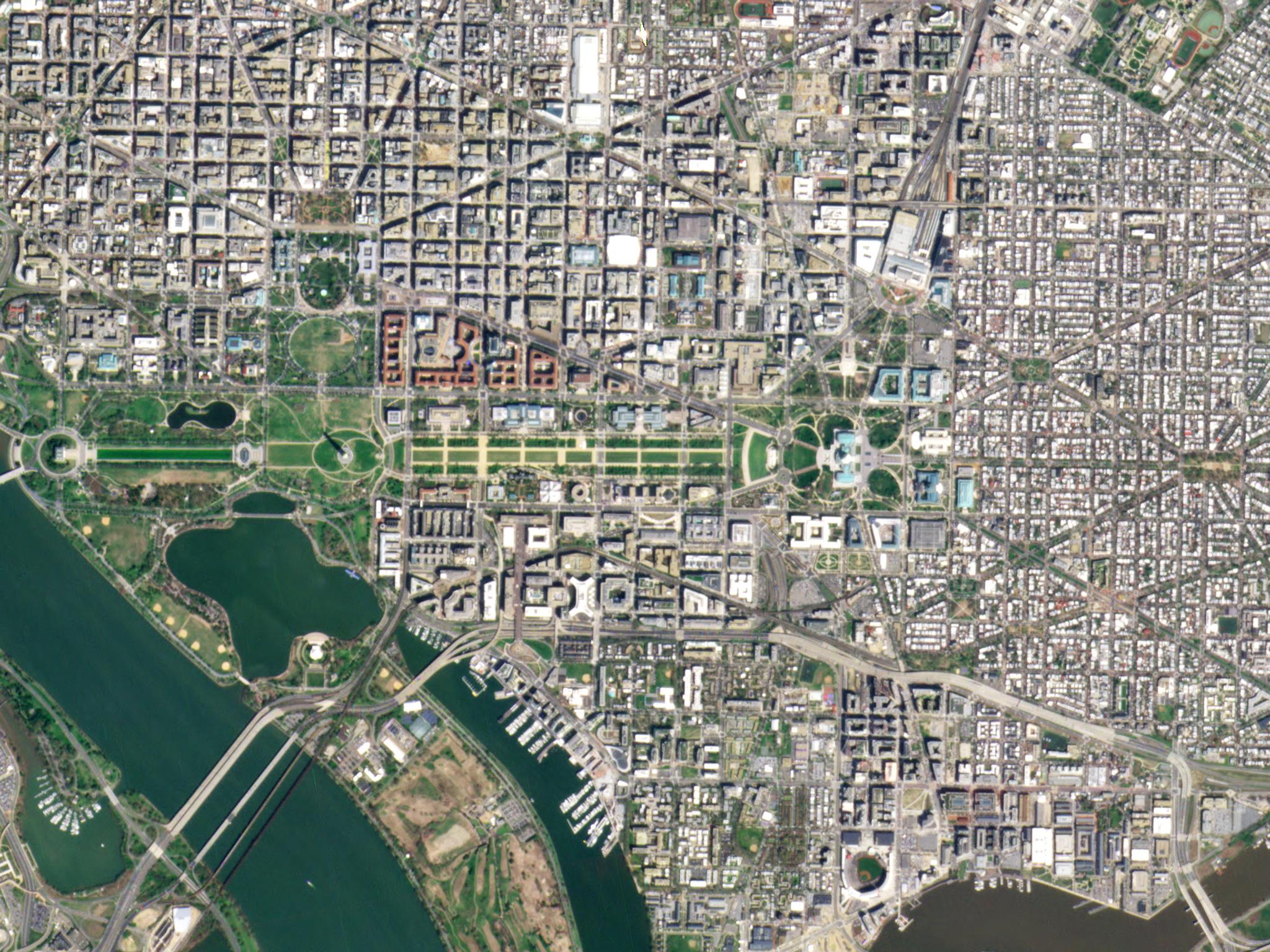Improving Climate Resilience with Satellite Data: A Conversation with US Government Leaders

Planet image of Washington, D.C. taken April 5, 2021. © 2021, Planet Labs PBC. All Rights Reserved.
StoriesPlanet recently participated in a virtual discussion with US Government leaders focused on leveraging satellite data to improve climate resilience. Robert Cardillo, Planet Federal’s Chief Strategist and Chairman of the Board, was joined by Christine Urbanowicz, Senior Spatial Geospatial Data Scientist, USAID, Kathleen White, Program Director of Climate Change, OSD ODASD (E&ER), U.S. Department of War, and Chelsea Lissette Cervantes de Blois, Climate Change Specialist, U.S. Department of State to share how their organizations are assessing climate risk and building climate resilience.
The Essential Role of Satellite Data and Other Tools in Defense, Development, and Diplomacy
No single source of information is sufficient for identifying and acting on climate change, so in order to make progress in these efforts, each of the represented organizations leverage satellite data in addition to a multitude of other tools. A few examples mentioned:
- The DoD Climate Assessment Tool, maintained by White’s office, allows the team “to look at our risks of operating in climate-related hazards [and] supports our internal climate-informed decision-making to help increase our installation resilience against climate hazards,” said White.
- Other tools mentioned by White include the DoD Regional Sea Level Rise Database and an interagency working group which includes the Army Corps of Engineers, NOAA, NASA, EPA, and USGS, among others.
- The Department of State has their own Center for Analytics, which Cervantes de Blois says helps achieve their goal to “use data visualizations to tell the story and convey information in a compact format to policymakers.”
When it comes to satellite data and remotely-sensed images, White says they “underline almost everything we do, both in the operational realm and in our installation resilience.” She continues on to elaborate noting that “it monitors changes in our operating environments, especially due to things like extreme temperature, extended rainfall, [and] the rate of wildfires.”
USAID uses satellite data to complement their other data analyses and data survey work. “For example,” says Urbanowicz, “In Malawi, we combine satellite data on precipitation and flooding with information that comes from household surveys, to figure out who is the most vulnerable to [natural hazard, health, and agricultural] shocks, why are they most vulnerable to shocks, and what will that look like in the future with climate change.”
From a diplomacy perspective, the Department of State has been leveraging satellite data as a way to guide understanding soil content and rainfall in Africa prior to the 2022 United Nations Climate Change Conference (COP 27) in Egypt later this year. “Specifically in Africa, we're looking at the horn of Africa and droughts and rainfall measures,” states Cervantes de Blois. “So understanding and using the satellite imagery when we don't have in-the-field access or information, guides us to understand where and how we should guide policy climate plans as well as diplomacy around climate when we have negotiation discussions prior to COP 27.”
Planet’s Perspective
On Planet’s side, Cardillo emphasized the importance of action and the role that satellite data can play. “We are in the midst of a climate crisis. And it’s a crisis obviously for us, but even more so for generations that are to follow,” he states. “I’m proud to be part of a team at Planet, within a broader ecosystem of many like-minded companies, nonprofits, academic institutions, and international organizations that are all pulling together - not just to recognize the change, but to act.”
To hear more about how each of these organizations leverage satellite data to make better, more informed decisions related to climate change and other mission objectives, watch the full video here.

Ready to Get Started
Connect with a member of our Sales team. We'll help you find the right products and pricing for your needs.

